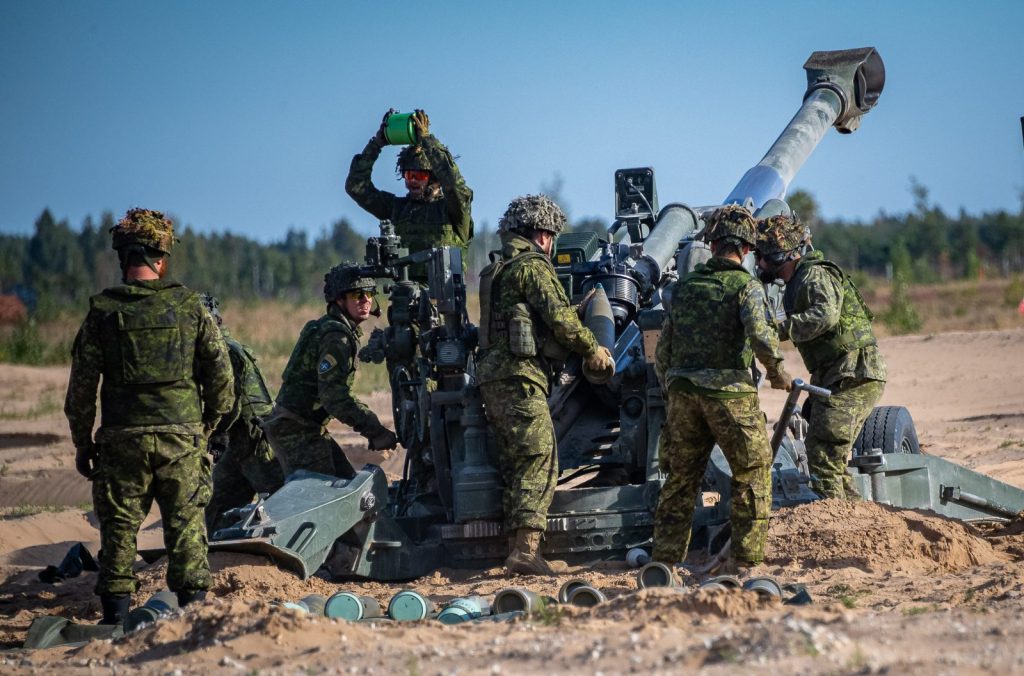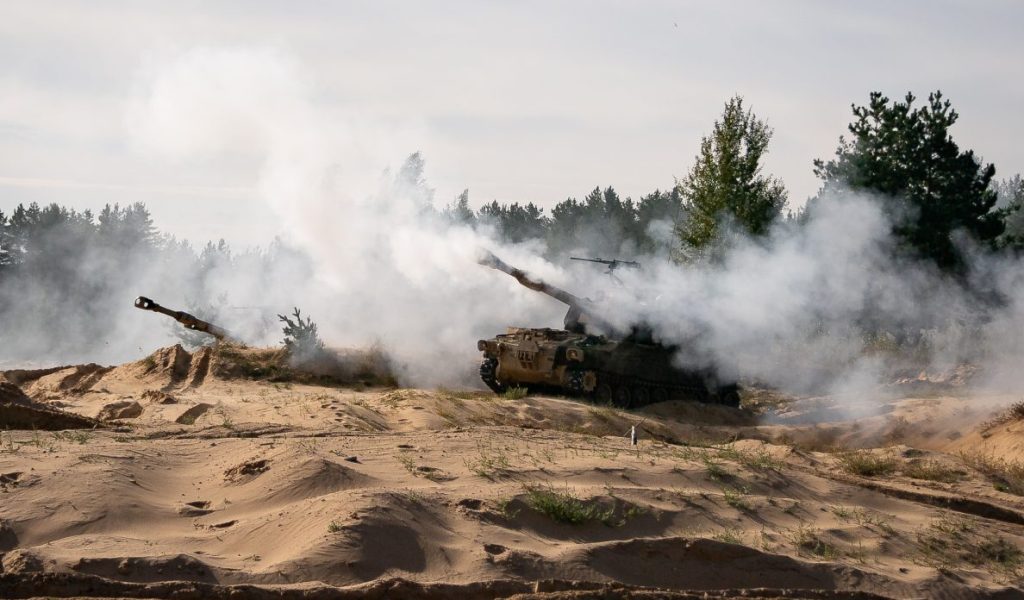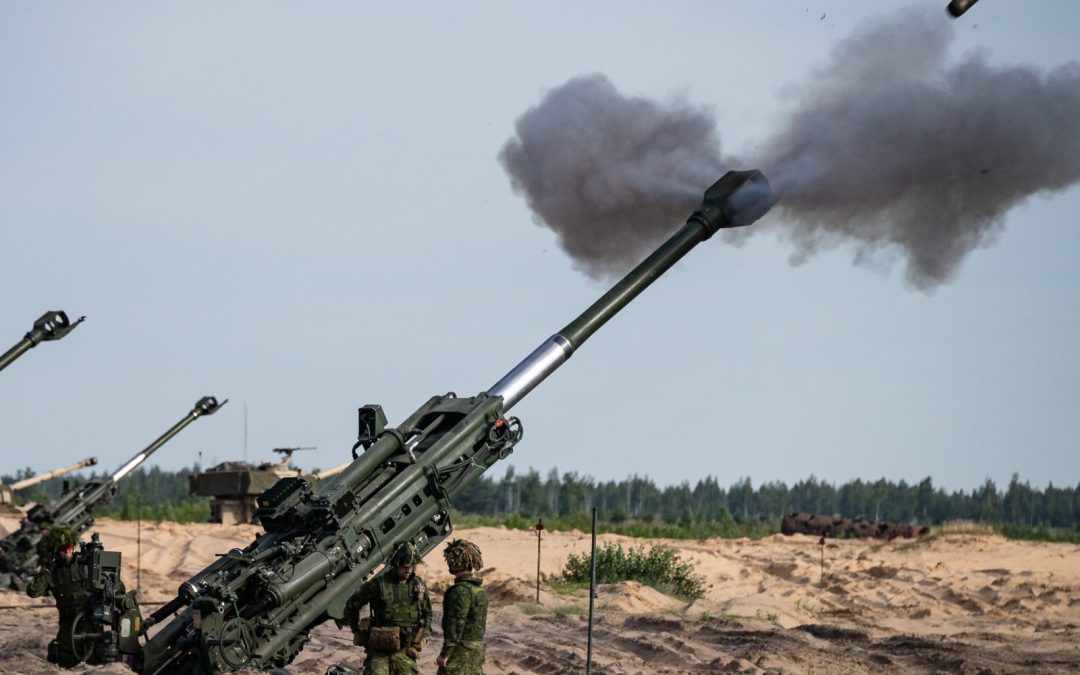by Chris Thatcher
In the wake of Russia’s invasion of Crimea in 2014, NATO allies responded with the formation of enhanced Forward Presence (eFP) Battle Groups in eastern Europe as one of several deterrence measures. The Canadian-led battle group in Latvia stood up in June 2017 and consisted of combat elements from five partners – Albania, Italy, Poland, Slovenia, and Spain.
Five years on, the multinational formation attached to a Latvian Land Forces mechanized infantry brigade has grown to 10 nations, including the Czech Republic, Montenegro, North Macedonia, and Slovakia, and is now also working alongside a Danish battalion.
The Canadian Armed Forces (CAF) contingent of about 700 is currently led by 3rd Canadian Division, primarily drawn from the 2nd Battalion, Princess Patricia’s Canadian Light Infantry (2 PPCLI), and includes a mechanized infantry company, a combat support company, and a combat service support company, as well as reconnaissance and armoured elements from the Lord Strathcona’s Horse (Royal Canadians), M777 Howitzers and forward observers from the 1st Regiment, Royal Canadian Horse Artillery (1 RCHA), and other specialists from across the CAF.
As the battle group has grown, incorporating new or additional capabilities has presented a challenge at times. Commanders have managed the language barrier with liaison officers and embeds and overcome most technical difficulties, especially with disparate communication systems. Combining doctrine and TTPs (techniques, tactics, and procedures), however, has taken a bit more work.
Last spring, the Canadian government added a M777 artillery battery of about 120 personnel to its combat mix, along with a Canadian fire support coordination centre (FSCC) able to provide unified command and control (C2) of the brigade’s fires assets and plug into the Latvian infantry brigade. Around the same time, Spain deployed a slightly smaller artillery battery with the self-propelled 155/52 light howitzer. The two joined the guns already fielded by Slovakian and Slovenian artillery units.
“It is not as much a capability change for fire power as a capacity change – just more guns,” said Lieutenant-Colonel Jesse van Eijk, the battle group commander and commanding officer of 2 PPCLI. Rather, the challenge has been knitting together Commonwealth and NATO fires doctrine – how each employs forward observation officers (FOO) and various artillery elements – and how best to conduct C2, “so that a Slovak FOO attached to a Polish tank company with a Canadian platoon embedded in it, is able to call for fires through a joint Canadian-Slovak FSCC and then have another joint fires coordination centre send the missions to the guns.”
Since neither Slovakia nor Slovenia are traditional partners, learning each other’s technical procedures was the first issue to address, said Major Matt Stickland, a 1 RCHA battery commander who also serves as fires advisor to the battle group.
“It has been a challenge to make sure we have a common understanding. While there are NATO TTPs and STANAGS (standardization agreements) for everything we do within the artillery, sometimes the interpretation of these by different counties in their language makes a difference,” he said. “With artillery, those differences in procedures when you are shooting a round 20 kilometres down range can have a big impact on making sure that round lands on target.”
Both NATO countries as well as Spain have adopted a U.S. centralized structure for artillery C2, he said, “that adds some complexity for the soldiers on that fire mission. Canadian forward observers are trained to order fire. Here, within the NATO content, every call for fire is a request for fire.”
That can mean operating within a very “prescribed context,” with detailed orders for when a battery can engage targets. Canadian artillery units are trained to support manoeuvre elements and advise how to achieve objectives with fires. “We want to be able to give our manoeuvre arms the freedom of manoeuvre and we will ensure that we are able to provide them with what they need from artillery to allow them to achieve their goal – if you want to do X, this is what we can do to make sure you are able to achieve your goal,” Stickland explained. The challenge has been adapting that to a more centralized process essential to “ensuring we can still employ these other artillery batteries to their fullest capability, because they really enhance our capability as an artillery group. Their self-propelled artillery can employ the shoot-and-move doctrine that we can’t do very well as towed artillery.”
Canada may be the battle group lead, but units like the artillery battery are modifying their approach to mesh with others, rather than setting the standards. “We are trying to pick and choose and we’re getting the best parts of both doctrines. The Slovakians and the Spanish have much better training and employment of artillery to allow for survivability on today’s modern battlefield,” he noted. “That centralized control of artillery … definitely enhances the survivability of an artillery battery. We are trying to take those things, fit them within our TTPs that we are developing here, but still be cognizant that we must provide fires to support troops on the ground.”
“This is something we are seeing across the battle group,” added van Eijk. “We are not here to turn all these countries into a Canadian battle group. We [want] to find how we can most effectively work together and get the best out of everybody because we are not going to change the way all these countries operate, nor should we try to.”
In fact, the best practices of others could significantly inform the Indirect Fire Modernization project that has emphasized agility as it seeks a platform to eventually replace the M777. “We have learned an immense amount that we are going to take back,” said Stickland. “A lot of the TTPs and doctrine employed by [our partners here] is of immense value to us and we are making sure we capture those lessons.”

KEEPING IT REAL
When the standard operating procedures (SOP) were first drafted for the multinational battle group, the six original nations and Latvia took a collaborative approach to finding common ground on 64 SOPs on everything from communications to personnel policy, fire support, and logistics. That led to a detailed integration plan for the first Canadian rotation to deploy.
Van Eijk, who has served in 1 and 2 PPCLI, commanded a rotation in Afghanistan, and instructed at the Infantry School in Gagetown, acknowledged a personal “learning curve” as he adapted to how other countries operate. He will adapt “the way I am going to do business” to the plans partner commanders brief to him, he explained, or tell them, “I need you to operate slightly differently for this phase or this operation because I do not have the ability to provide that centralized command and control, especially with the size of the battle group right now.”
Because of the size and structure of the battle group, including some of the engineering and fires assets that might normally be commanded from a higher level, command posts “are bigger than a Canadian battle group would be, and our Combat Service Support (CSS) organization is very large.”
Training exercises are designed with that larger structure in mind. Rather than develop “contrived scenarios” that attempt to write in every element of the battle group and end up “teaching bad lessons because they make no tactical sense,” training is more targeted, identifying specific primary elements to exercise and “finding a way to provide value to everybody else,” he said.
“We can take some of those specialists and utilize them in some of their secondary roles. Czech specialist pontoon bridging sappers at the end of the day are still sappers and they are perfectly happy doing standard sapper tasks and augmenting our Spanish-led engineering company. Other elements will go off and do their own thing in that time. Fires is a great example: On our first exercise, Rampart Forge, we really focused on the manoeuvre companies, so Matt went off with the guns to the flanks and worked on fires integration.”
On Rampart Strike, a more recent exercise, the artillery was integrated “into the game a bit more,” he said. “We identify the exercise objectives, figure out who we can properly exercise and then find a way to use those elements in the space we have,” a training area that is far smaller than any in Canada.
Battle group exercises have always been conducted against a backdrop illuminated by Russian training or other activity in the region. Russia’s invasion and ongoing war with Ukraine has heightened the importance of the battle group, but “I don’t think our mindset has shifted much,” said van Eijk as the battle group prepared for Exercise Silver Arrow, a brigade level interoperability exercise led by Latvia. “The mission hasn’t changed in terms of the mission statement. The Russian focus is not right now on Latvia, but it does not preclude us from keeping an eye on what is happening on our flanks.”


